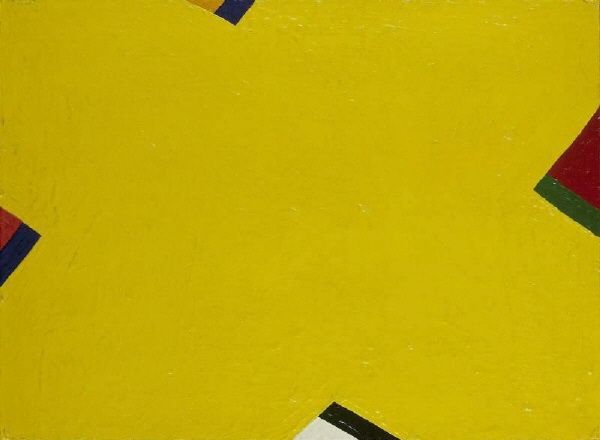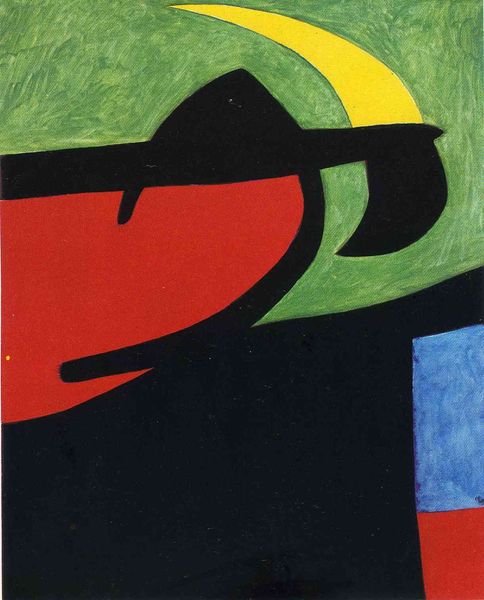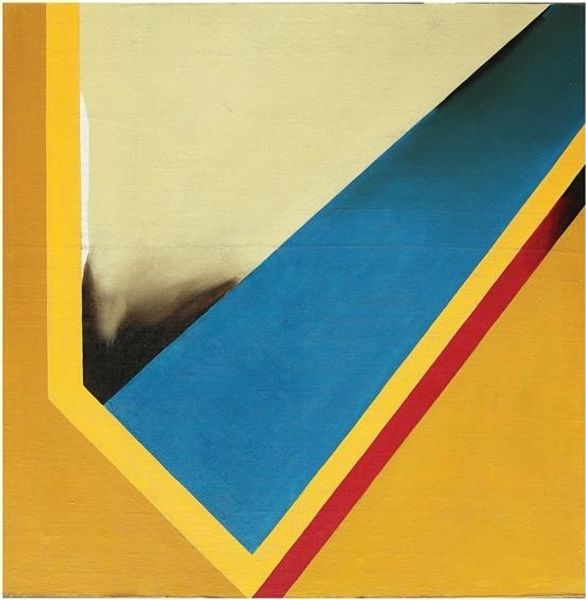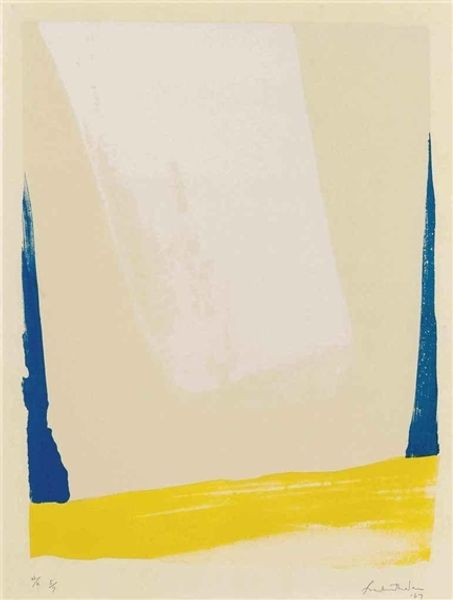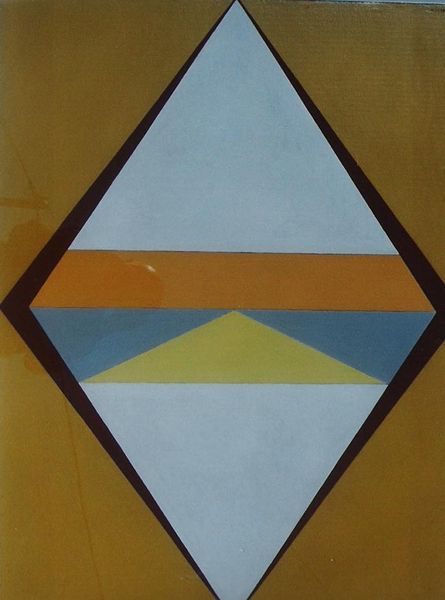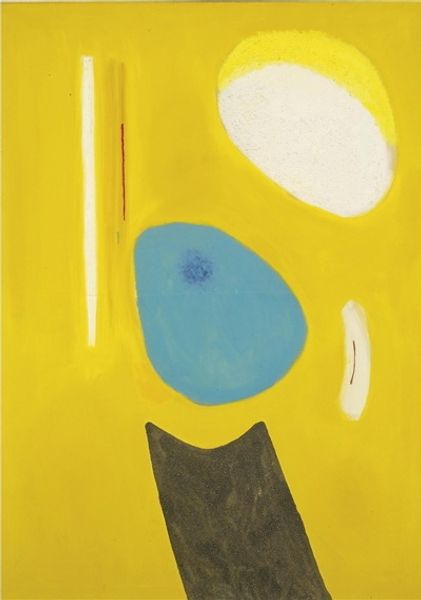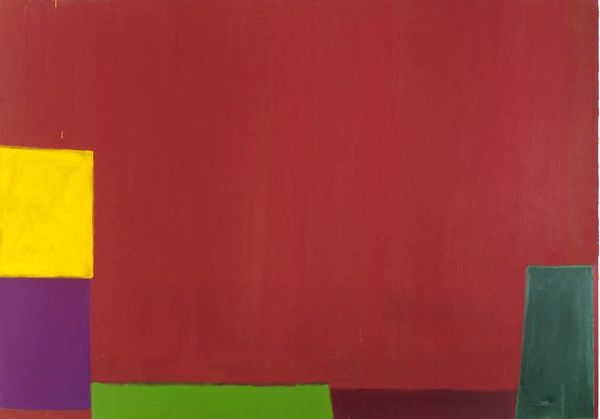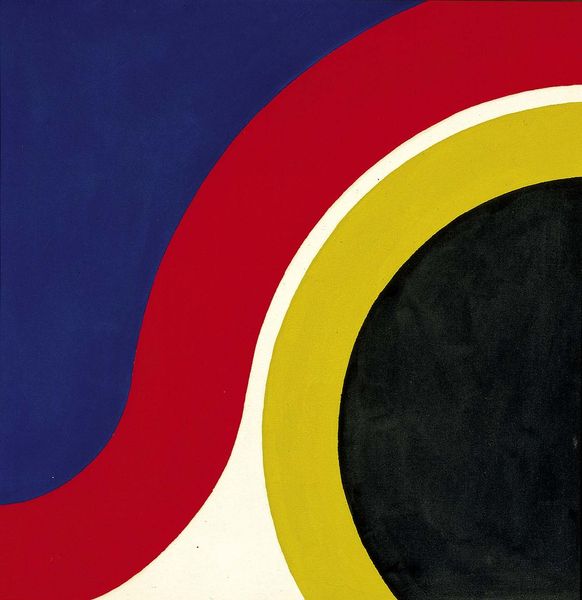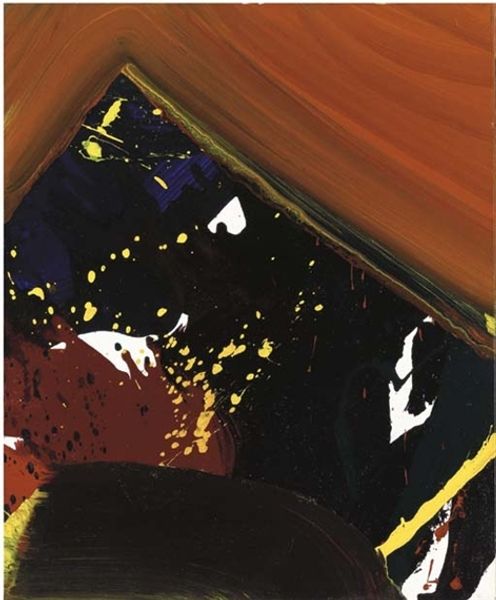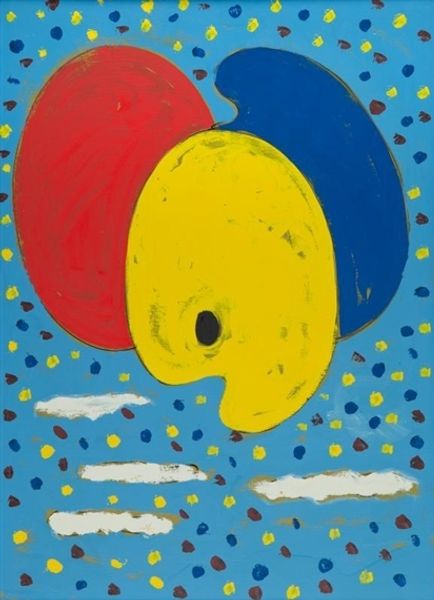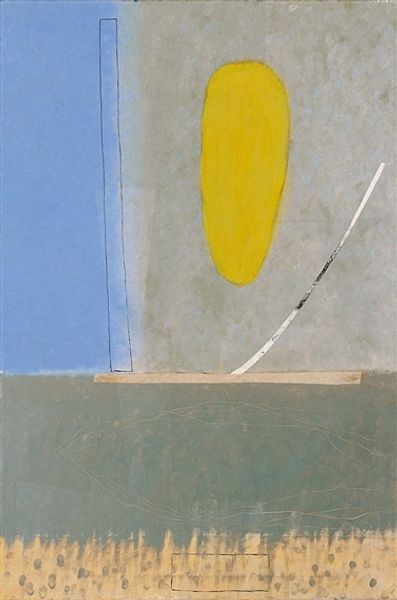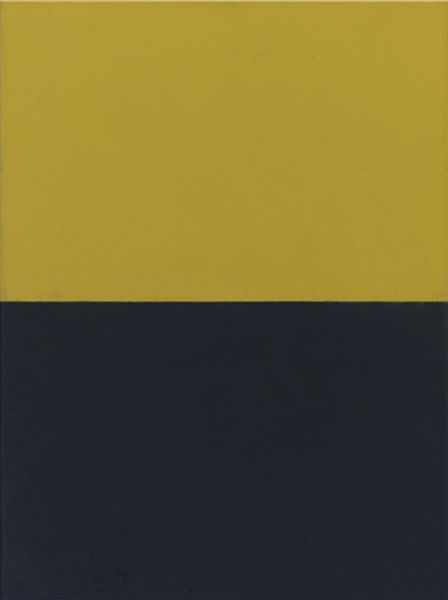
The Lark's Wing, Encircled with Golden Blue, Rejoins the Heart of the Poppy Sleeping on a Diamond-Studded Meadow 1967
0:00
0:00
joanmiro
Private Collection
painting, acrylic-paint
#
painting
#
landscape
#
acrylic-paint
#
geometric
#
abstraction
#
surrealism
#
modernism
Dimensions: 195 x 130 cm
Copyright: Joan Miro,Fair Use
Curator: What immediately strikes me about Joan Miró’s “The Lark's Wing, Encircled with Golden Blue, Rejoins the Heart of the Poppy Sleeping on a Diamond-Studded Meadow,” created in 1967, is its almost childlike simplicity. The broad blocks of colour—the yellow and green separated by a heavy black line—it feels immediately elemental. Editor: Yes, and within that apparent simplicity, I think lies a complex intersection of identity and the post-war cultural landscape. Look at that yellow—is that optimism in the face of existential threat, or a critical commentary on bourgeois complacency? Curator: That’s a rich reading. Certainly, Miró was always politically engaged, even if his surrealism veered towards the abstract rather than the explicitly representational. The way institutions then shaped his production and reception is interesting though: his move toward abstraction occurred amidst a politically fraught climate. Editor: Precisely. Consider the socio-political influences impacting modernism during this period. Miró, like many artists, was navigating shifting cultural landscapes and negotiating with prevailing ideologies through visual cues. It really does pose critical questions on power dynamics embedded within his minimalist style and its market valuation then and now. Curator: You're right, we can also talk about technique! He was experimenting with acrylic paint on canvas. And in my mind this enabled a flatness and a vibrancy, a sense of immediacy that’s critical to the overall effect. But if you examine that almost oval, blue-grey form—it isn't just about composition; its presence resonates on issues from immigration, global economy… Editor: Absolutely. In our modern context, this simple work evokes dialogue on our complex relationship with landscapes and challenges assumptions. It almost demands that you deconstruct, piece by piece. Curator: Ultimately, despite my desire for historical anchors, I think Miró’s genius lies in its openness. Even through its aesthetic echoes throughout cultural narratives, we’re still talking about its relevance today. Editor: And isn't that the goal? To use historical perspectives not as definitive answers, but as portals into a richer dialogue? That alone transforms how society then interprets works of art.
Comments
No comments
Be the first to comment and join the conversation on the ultimate creative platform.
